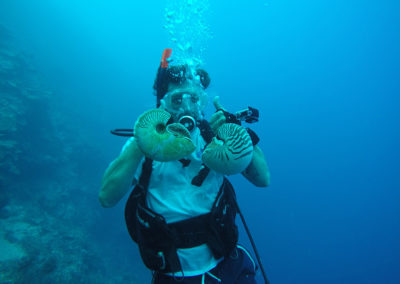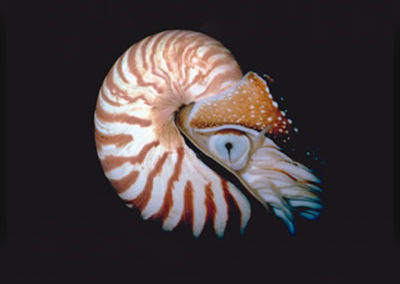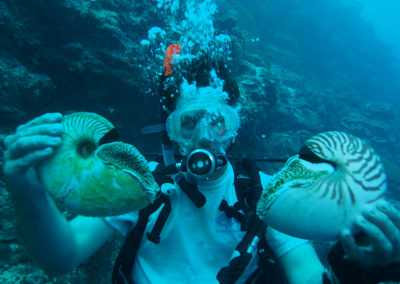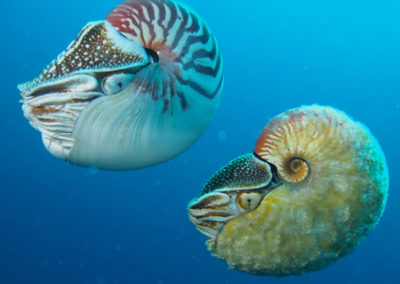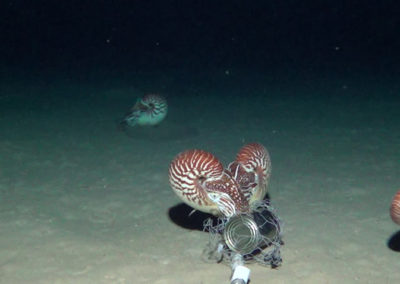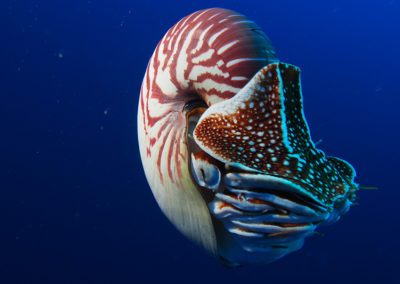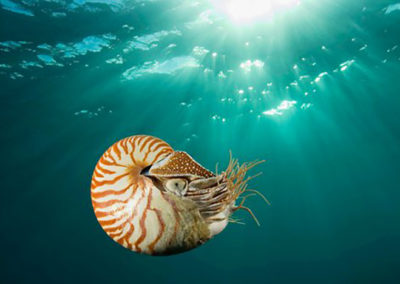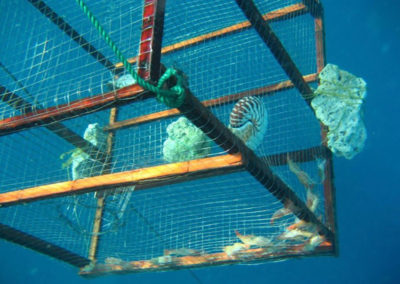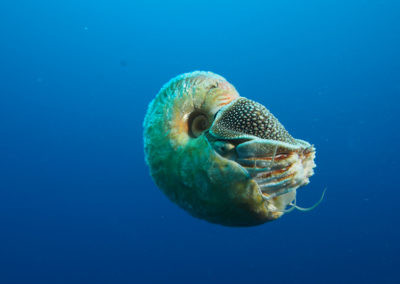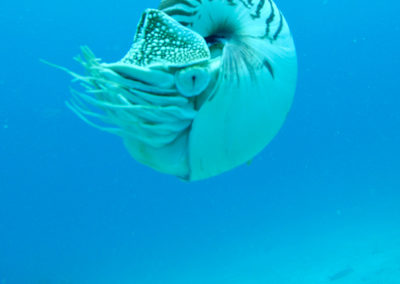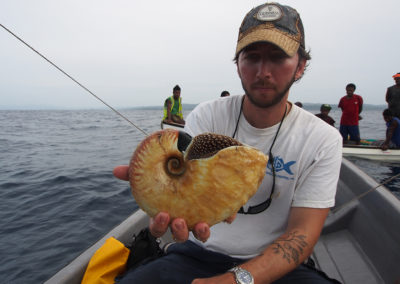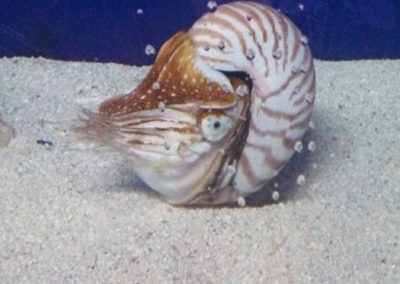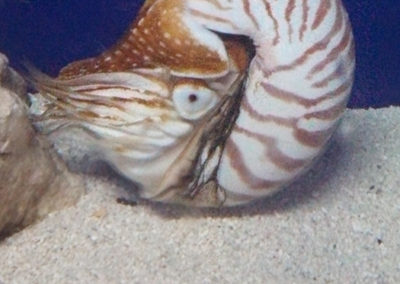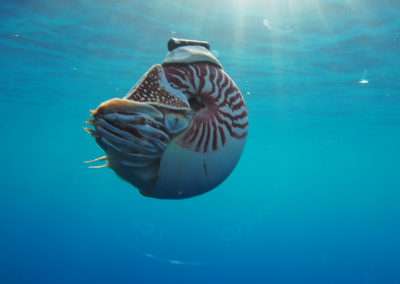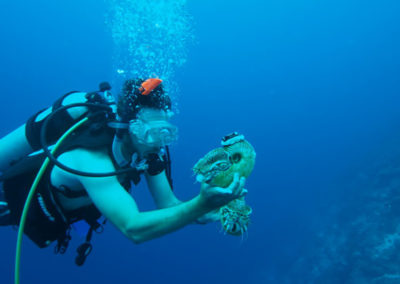
A Conservation Organization
The Nautilus
What is the Nautilus?
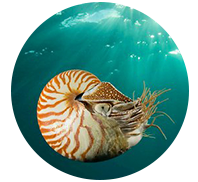
The nautilus is a cephalopod – a family including octopi, squid and cuttlefish. It has been on the planet for 500 Million years – its ancestors are older than dinosaurs and even fish! Having survived relatively unchanged for millions of years, nautiluses represent the only living members of the subclass nautiloidea, and are often considered “living fossils”.
Habitat:

The nautilus hails from southern Japan to the Great Barrier Reef and from the Indo-Pacific to Samoa. During the day, it usually lives from 900 to 2000 feet below the surface, while at night it rises to feed at about 500 to 300+ feet below the surface.
Life span:

The life of a nautilus is about 20 years, but it can take 15 years for the nautilus to reach sexual maturity. When it does reproduce, it only lays a few eggs, which means that once their numbers are depleted, it can take a long time for nautilus populations to recover.
Reproduction in Captivity:

The nautilus does not stay alive very long in captivity, thus nautiluses have so far been unable to successfully reproduce in captivity. This, along with their complicated reproductive cycle, is one of the biggest reasons why the nautilus needs our help now more than ever.
Why are nautiluses in trouble?
Nautilus jewelry
This horrible massacre of the Nautilus occurs to make these necklaces. The true beauty of the nautilus lies in its graceful movements and its brilliant orange-red live shell. Please stop purchasing this jewelry. Be mindful that Nautilus jewelry doesn’t always look like a shell. If the jewelry you’re buying looks like mother of pearl ask what it’s made of, because it could be made of the inside of a nautilus shell.
According to the New York Times, between 2005-2008 over a half of a million nautilus shells were imported to the USA alone for jewelry and home decoration. It is because of these products that these ancient and amazing creatures are being driven to the brink of extinction.
Nautilus jewelry is often falsely marketed as mother of pearl. If the so called “mother of pearl” has obvious stripes, then it is probably made of nautilus shell. Another misleading name is Osmena pearl which is actually just nautilus jewelry cut into small pieces.
Nautiluses are only found in a very small region of the world, called the Indopacific triangle, and unless we can slow their slaughter, we will lose this 500-million-year-old creature in less than 50 years.
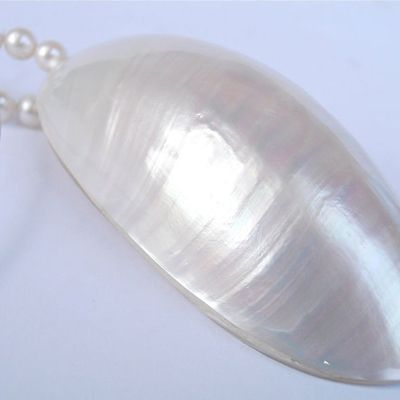
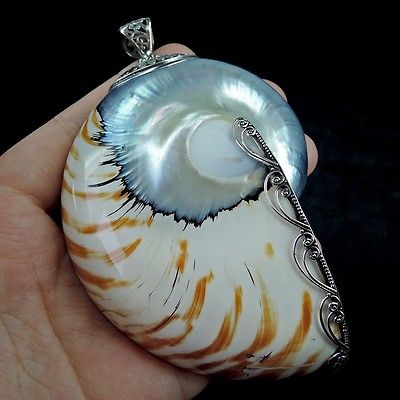
Fun Facts:
- To move, the nautilus draws water into and out of the chamber with its hyponome in a process called jet propulsion. While the water is inside the chamber, the siphuncle extracts salt from it and diffuses it into the blood. The animal adjusts its buoyancy by osmotically pumping gas and fluid into or out of the camerae along the siphuncles. The nautilus changes the amount of gas in its chambers to adjust flotation.
- The nautilus has about 100 suckerless tentacles surrounding the mouth and the hyponome.
- Because of it’s age, the nautilus is sometimes called a living fossil.
- The rare Allonautilus is one of the rarest animals in the world.
View Photo Gallery
We want to protect the nautilus.
Please join Josiah & Ridgely in spreading the word that the nautilus is endangered,
and please help us to help those working to preserve this amazing creature.

